
How to Use NUCLEO-L476RG: Examples, Pinouts, and Specs
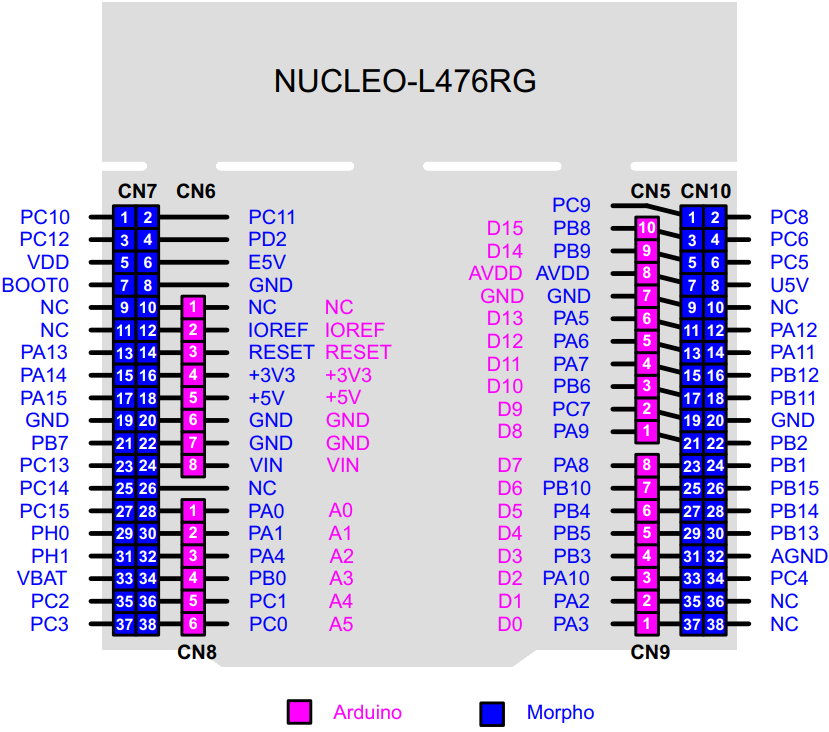
 Design with NUCLEO-L476RG in Cirkit Designer
Design with NUCLEO-L476RG in Cirkit DesignerIntroduction
The NUCLEO-L476RG is a development board manufactured by STMicroelectronics (Part ID: NUL476RG$AU1) and is based on the STM32L476RG microcontroller, which features an ARM Cortex-M4 core. This board is designed to provide a flexible and user-friendly platform for developing low-power applications. It supports a wide range of connectivity options, including USB, UART, I2C, and more.
The NUCLEO-L476RG is compatible with the Arduino Uno R3 pinout, making it easy to integrate with Arduino shields and other accessories. Additionally, it includes an ST-LINK/V2-1 debugger/programmer, eliminating the need for an external programmer.
Explore Projects Built with NUCLEO-L476RG
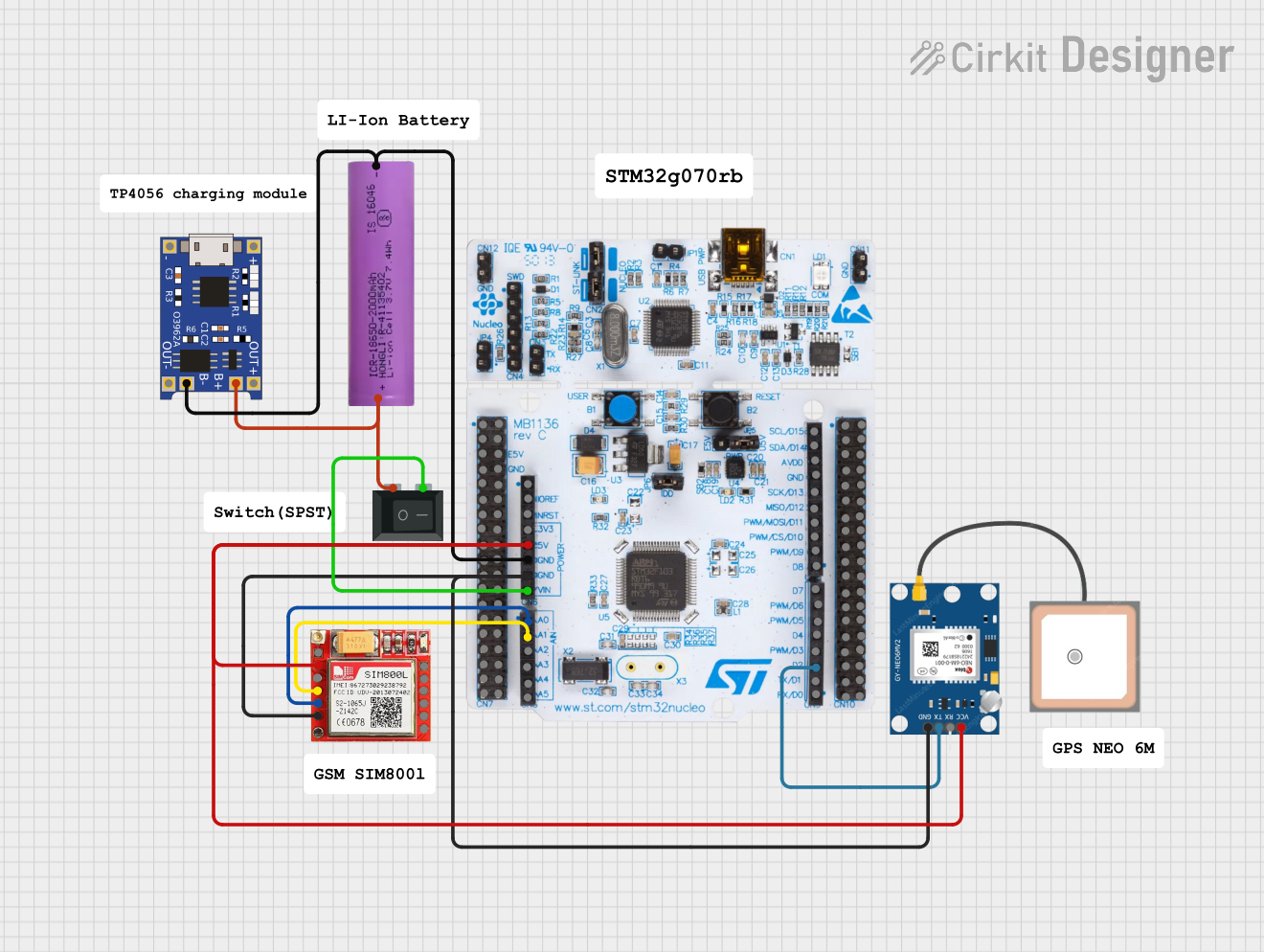
 Open Project in Cirkit Designer
Open Project in Cirkit Designer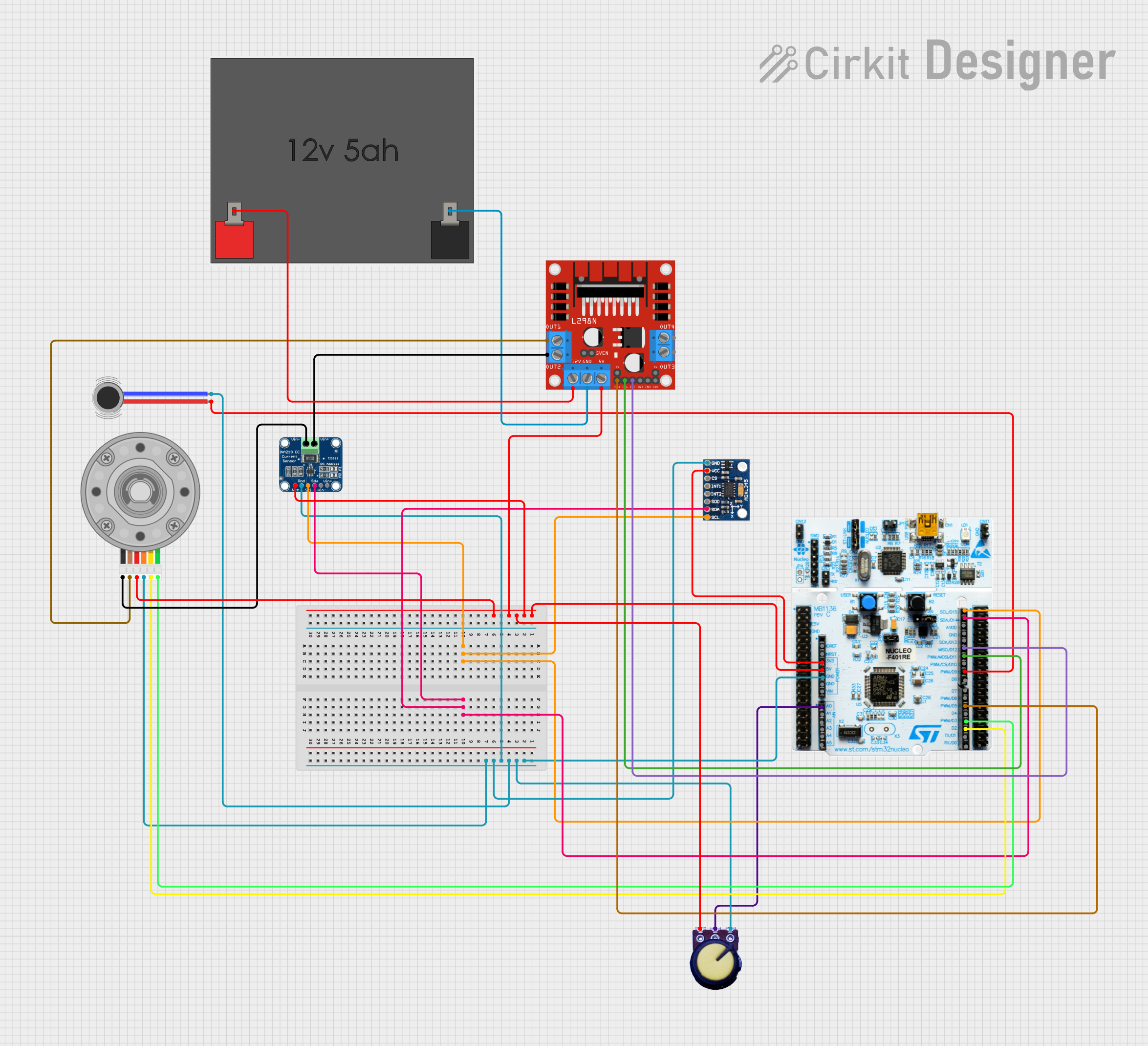
 Open Project in Cirkit Designer
Open Project in Cirkit Designer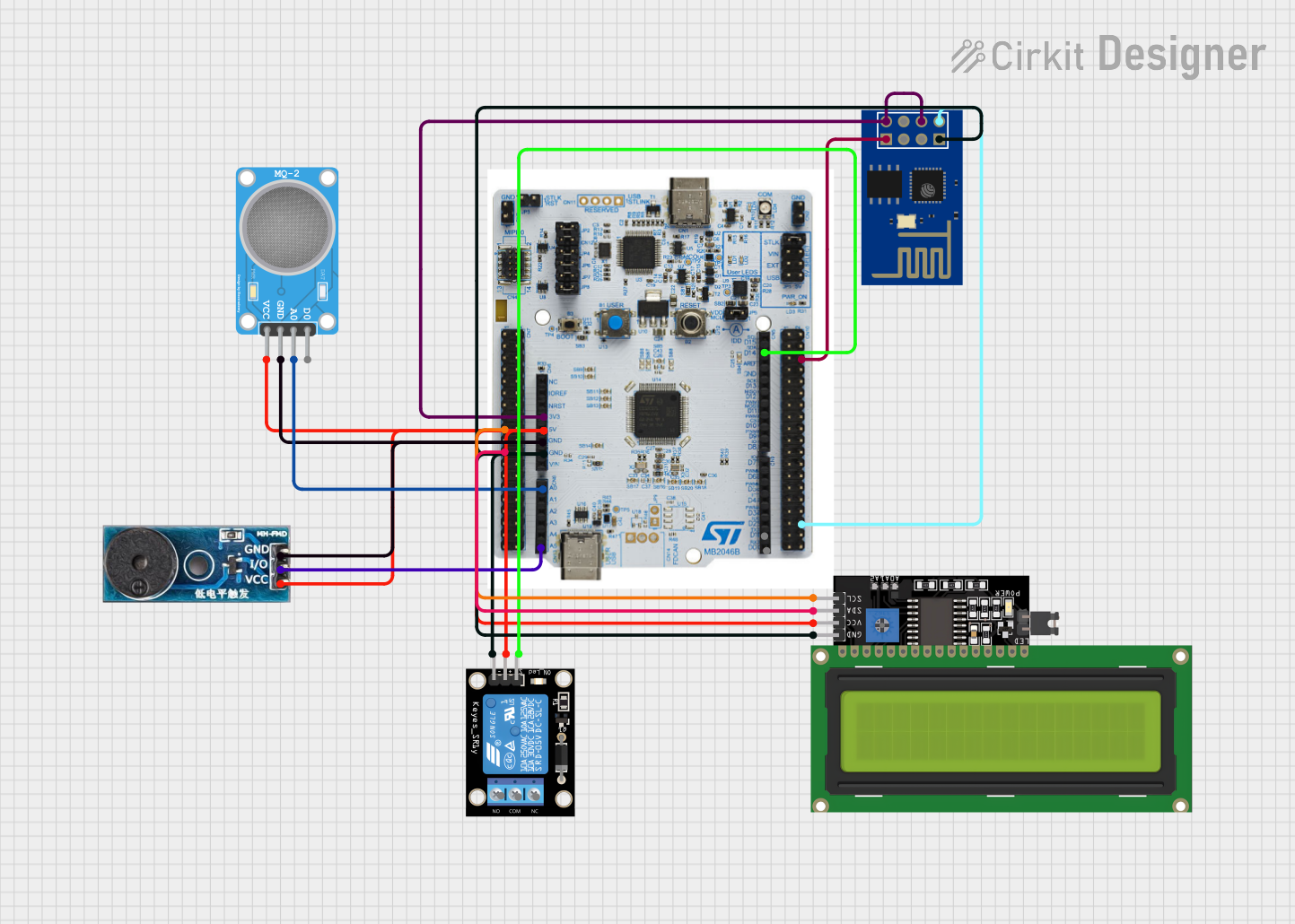
 Open Project in Cirkit Designer
Open Project in Cirkit Designer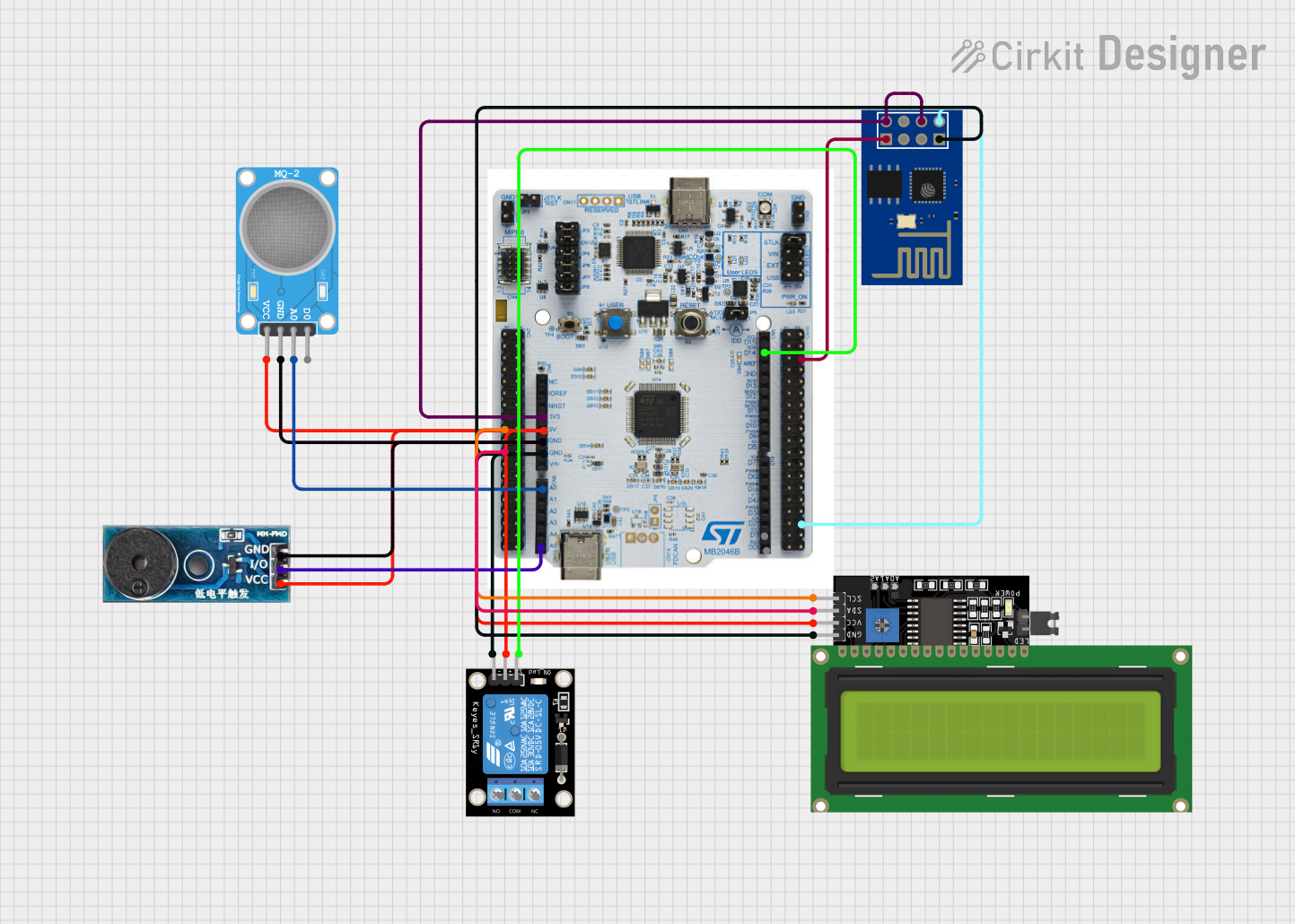
 Open Project in Cirkit Designer
Open Project in Cirkit DesignerExplore Projects Built with NUCLEO-L476RG

 Open Project in Cirkit Designer
Open Project in Cirkit Designer
 Open Project in Cirkit Designer
Open Project in Cirkit Designer
 Open Project in Cirkit Designer
Open Project in Cirkit Designer
 Open Project in Cirkit Designer
Open Project in Cirkit DesignerCommon Applications
- Low-power IoT devices
- Wearable technology
- Sensor interfacing and data logging
- Prototyping for industrial and consumer electronics
- Educational and research projects
Technical Specifications
Key Technical Details
| Parameter | Value |
|---|---|
| Microcontroller | STM32L476RG (ARM Cortex-M4, 80 MHz, 32-bit) |
| Flash Memory | 1 MB |
| SRAM | 128 KB |
| Operating Voltage | 3.3V (core), 5V (via USB or external power supply) |
| Input Voltage Range | 7V to 12V (via VIN pin) |
| Communication Interfaces | USB, UART, I2C, SPI, CAN, ADC, DAC |
| Debugger/Programmer | ST-LINK/V2-1 (embedded) |
| GPIO Pins | 51 (including analog and digital pins) |
| Arduino Compatibility | Arduino Uno R3 pinout |
| Power Consumption | Ultra-low power (down to 1.8 µA in STOP mode) |
| Dimensions | 68.6 mm x 53.3 mm |
Pin Configuration and Descriptions
The NUCLEO-L476RG features a dual-row pin header layout, with compatibility for both STM32 and Arduino Uno R3 pinouts. Below is a summary of the key pin configurations:
STM32 Pinout
| Pin Name | Description | Notes |
|---|---|---|
| PA0-PA15 | General-purpose I/O pins | Can be configured as digital/analog pins |
| PB0-PB15 | General-purpose I/O pins | Includes ADC/DAC functionality |
| PC0-PC15 | General-purpose I/O pins | Supports alternate functions (e.g., I2C) |
| VDD | Power supply (3.3V) | Core operating voltage |
| GND | Ground | Common ground for the board |
| NRST | Reset pin | Active low reset |
Arduino Uno R3 Compatibility
| Pin Name | Function | Notes |
|---|---|---|
| A0-A5 | Analog input pins | Can also be used as digital I/O |
| D0-D13 | Digital I/O pins | Includes PWM support on select pins |
| VIN | External power input (7V-12V) | Powers the board when USB is not used |
| 5V | 5V output | Regulated output from USB or VIN |
| 3.3V | 3.3V output | Regulated output for low-power peripherals |
| GND | Ground | Common ground for Arduino shields |
Usage Instructions
How to Use the NUCLEO-L476RG in a Circuit
Powering the Board:
- Connect the board to your computer via the micro-USB port for power and programming.
- Alternatively, supply power through the VIN pin (7V-12V) or the 5V pin (regulated 5V).
Programming the Board:
- Use the embedded ST-LINK/V2-1 debugger/programmer to upload code directly from the STM32CubeIDE or Arduino IDE.
- Ensure the correct board and port are selected in your IDE.
Connecting Peripherals:
- Use the Arduino Uno R3 headers to connect compatible shields.
- For custom circuits, use the STM32 pin headers for direct access to GPIO, ADC, I2C, SPI, and other interfaces.
Running the Code:
- After uploading the code, the board will automatically reset and execute the program.
- Use the LED indicators (e.g., LD1, LD2) to monitor power and activity.
Important Considerations and Best Practices
- Power Supply: Avoid exceeding the input voltage range (7V-12V) to prevent damage to the board.
- Pin Voltage Levels: Ensure that external devices connected to GPIO pins operate at 3.3V logic levels.
- Debugging: Use the ST-LINK/V2-1 for real-time debugging and monitoring.
- Low-Power Modes: Leverage the STM32L476RG's ultra-low-power features for battery-powered applications.
Example Code for Arduino IDE
The following example demonstrates how to blink an LED connected to pin D13:
// Example: Blink an LED on pin D13 (built-in LED on NUCLEO-L476RG)
// Define the LED pin
const int ledPin = 13;
void setup() {
// Initialize the LED pin as an output
pinMode(ledPin, OUTPUT);
}
void loop() {
// Turn the LED on
digitalWrite(ledPin, HIGH);
delay(1000); // Wait for 1 second
// Turn the LED off
digitalWrite(ledPin, LOW);
delay(1000); // Wait for 1 second
}
Troubleshooting and FAQs
Common Issues and Solutions
Board Not Detected by IDE:
- Ensure the USB cable is properly connected and functional.
- Verify that the correct board and port are selected in the IDE.
- Update the ST-LINK drivers if necessary.
Code Upload Fails:
- Check that the board is in programming mode (default mode).
- Ensure no external devices are interfering with the SWD pins.
Power Issues:
- Confirm that the input voltage is within the specified range (7V-12V for VIN).
- Check for loose connections or damaged cables.
Peripherals Not Working:
- Verify the pin configuration in your code matches the hardware setup.
- Ensure external devices are powered and operating at 3.3V logic levels.
FAQs
Q: Can I use the NUCLEO-L476RG with the Arduino IDE?
A: Yes, the board is compatible with the Arduino IDE. Install the STM32 core for Arduino to get started.
Q: How do I enable low-power modes?
A: Use the STM32 HAL library or STM32CubeMX to configure the microcontroller's power modes.
Q: Is the board compatible with all Arduino shields?
A: The board supports the Arduino Uno R3 pinout, but some shields may require 5V logic, which is not directly supported.
Q: Can I use the board for battery-powered applications?
A: Yes, the STM32L476RG microcontroller is optimized for ultra-low-power applications, making it ideal for battery-powered designs.
This concludes the documentation for the NUCLEO-L476RG development board. For further details, refer to the official datasheet and user manual provided by STMicroelectronics.